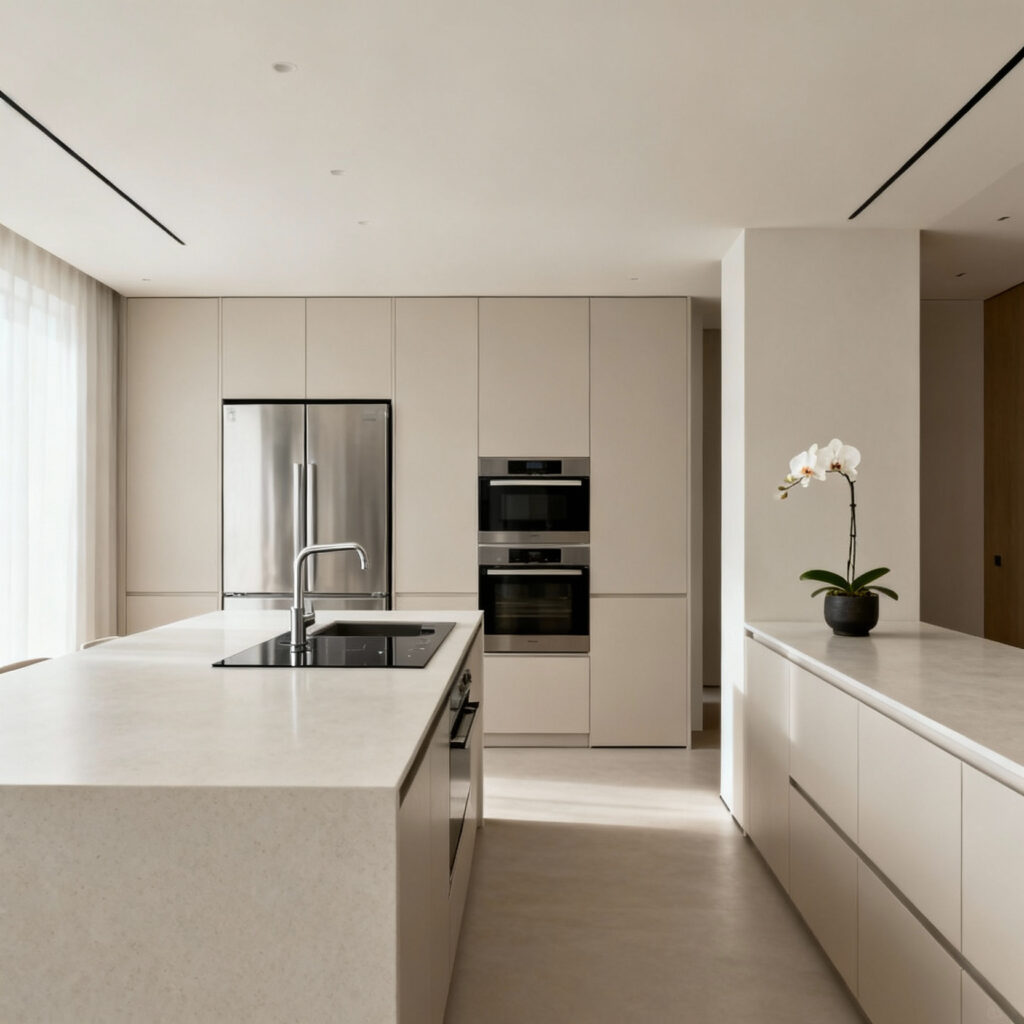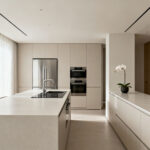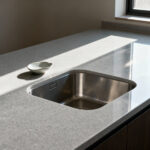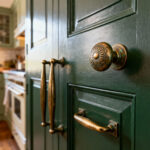Designing a culinary space is fundamentally an act of self-revelation—every choice reflects not just aesthetic preference, but deeper values about how life should be lived. The most compelling modern kitchen interiors aren’t decorated; they’re authored. They tell a story of harmony and balance, a quiet dialogue between purpose and spirit. These twenty principles separate a space that feels authentic from one that simply follows a trend.
The kitchen is the heart of the home, a truth that resonates from Hanoi to Paris. It’s where the day begins and ends, a place of nourishment in every sense. In my work, I find the most beautiful spaces are born from a fusion of philosophies—the clean, functional lines of European modernism providing the structure, and the mindful, nature-centric principles of Asian design breathing soul into it. It’s about creating an environment where efficiency feels elegant and tranquility is built into the architecture.
This isn’t about choosing sides between East and West. It’s about understanding their shared language of beauty and function. Let’s explore twenty pivotal elements that, when woven together, create a constellation of ideas for a kitchen that is not just modern, but timeless—a true sanctuary for contemporary life.
The Evolving Epistemology of Culinary Spaces: Form, Function, and the Human Element (Part 1)
Before we can talk about materials or appliances, we must first reconsider the very purpose of a kitchen. It’s more than a room for tasks; it is a stage for our daily lives. This section looks at the profound connection between the design of a space and our experience within it, shifting the focus from simple utility to intuitive living.
1. Cultivating Intentional Flow: Crafting an Intuitive Culinary Workflow
The rhythm of a great kitchen is a dance. The old ‘work triangle’ was a rigid waltz, but modern life is more like fluid choreography. Intentional flow understands that we do more than just prep, cook, and clean. We host, we work, we pause for a quiet cup of tea. It’s about designing for the natural movements of your life, not a generic formula. This means creating intuitive zones—a preparation area that flows seamlessly to the cooking surface, with storage precisely where you need it, minimizing wasted steps and mental friction.
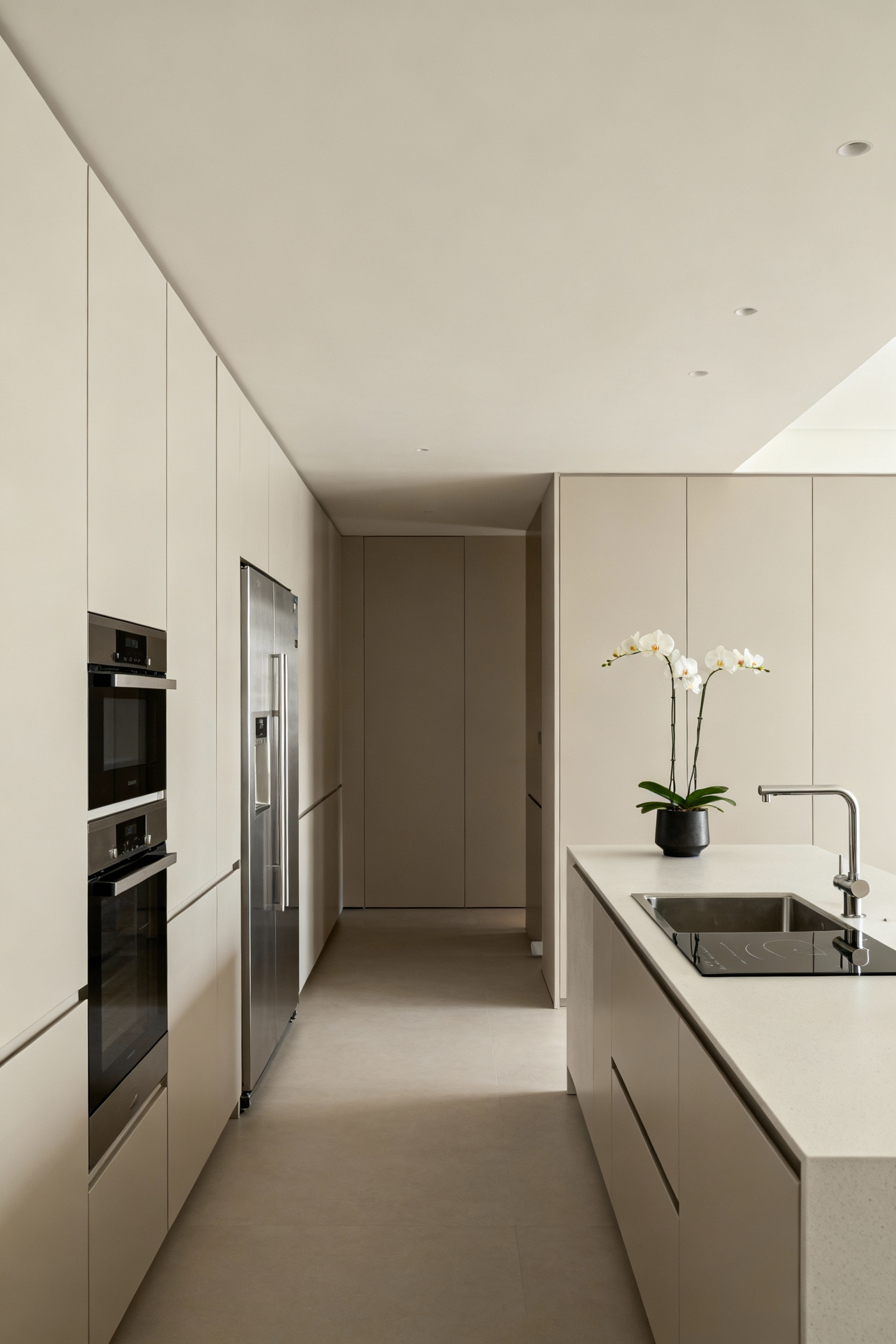
In my modern Asian-European fusion specialist practice, I always emphasize that true luxury is effortlessness. We achieve this not with gadgets, but with foresight. Think of an island not just as a block in the middle of the room, but as a central pivot point where multiple activities can gracefully coexist. Integrated sinks, discreet waste systems, and flush induction hobs allow it to be a prep station one moment and a serving buffet the next. Philosophically, a well-designed flow is about more than saving time; it’s about preserving energy—your energy—so you can find joy in the process, not just rush to the result. It brings a sense of calm and mastery to daily rituals.
2. Harmonizing Negative Space: Mastering the Art of Decluttered Visual Serenity
In both minimalist modernism and traditional Eastern aesthetics, what isn’t there is often as important as what is. Negative space isn’t emptiness; it’s quiet. It is the pause in a conversation that gives the words meaning. In modern kitchen interiors, mastering this principle is the key to creating a space that feels serene and expansive, rather than just full. It is an intentional choice to let surfaces breathe and forms stand on their own.
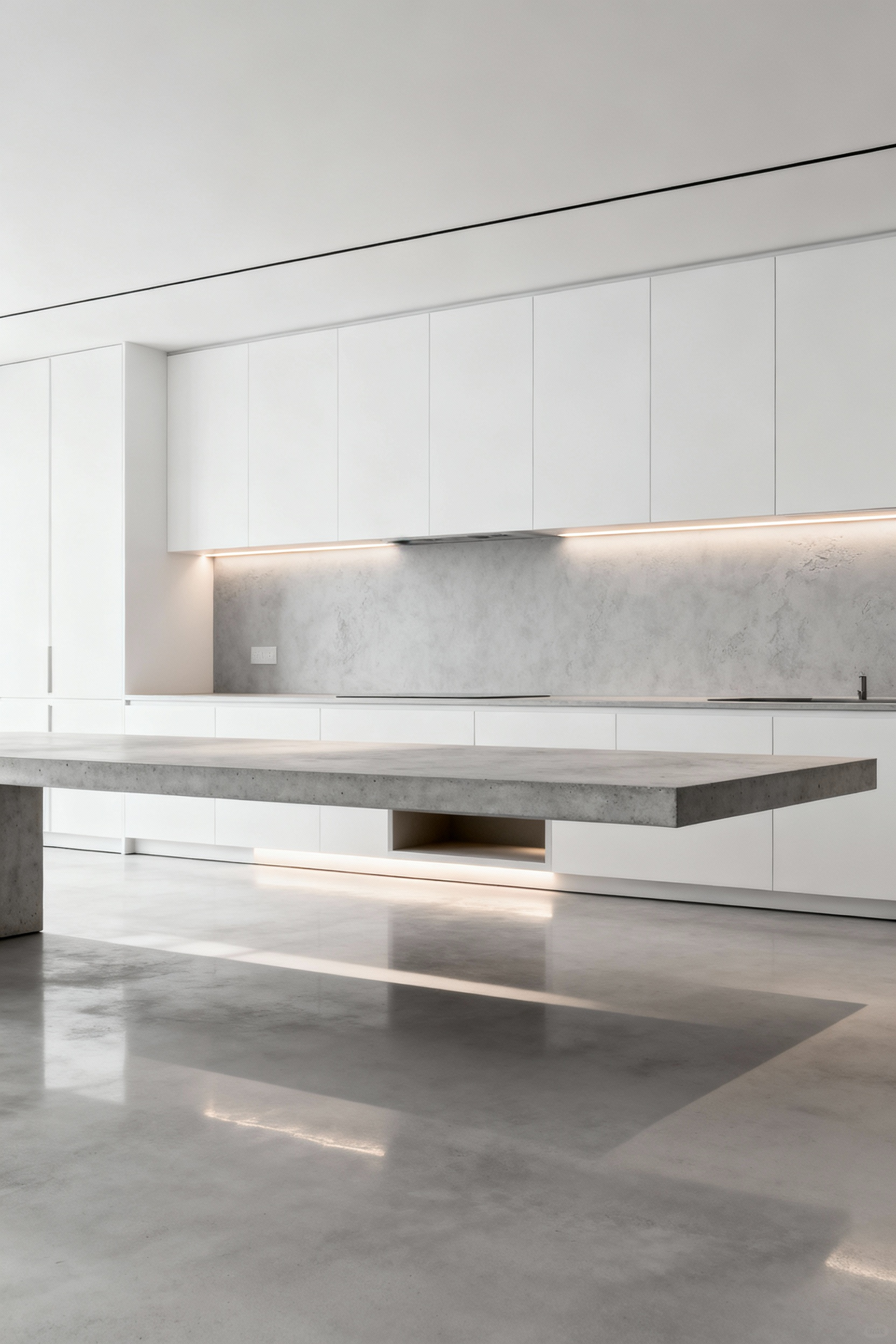
This requires discipline. It means designing intelligent, concealed storage so that countertops can remain clear, free from the visual noise of appliances and clutter. Bespoke cabinetry that reaches the ceiling, appliances clad to match the joinery, and vent hoods that disappear into the architecture are the tools of this trade. A backsplash of uninterrupted stone or a single open shelf displaying a few cherished objects has more power than a wall cluttered with cabinets. What you are doing is editing—you are choosing what story to tell by giving it the space to be seen. It’s a profound relief for the mind and a hallmark of true contemporary sophistication.
3. Biophilic Integration: Weaving Nature’s Resonance into Interior Elements for Enhanced Well-being
We all have an innate connection to the natural world. Biophilic design is simply the practice of honoring that connection within our homes. For modern kitchen interiors, this goes so much deeper than placing a ficus in the corner. It’s about weaving the patterns, materials, and calming presence of nature into the very bones of the space. It’s about blurring the line between inside and out, a principle deeply rooted in Vietnamese architecture, to create an environment that feels restorative and alive.
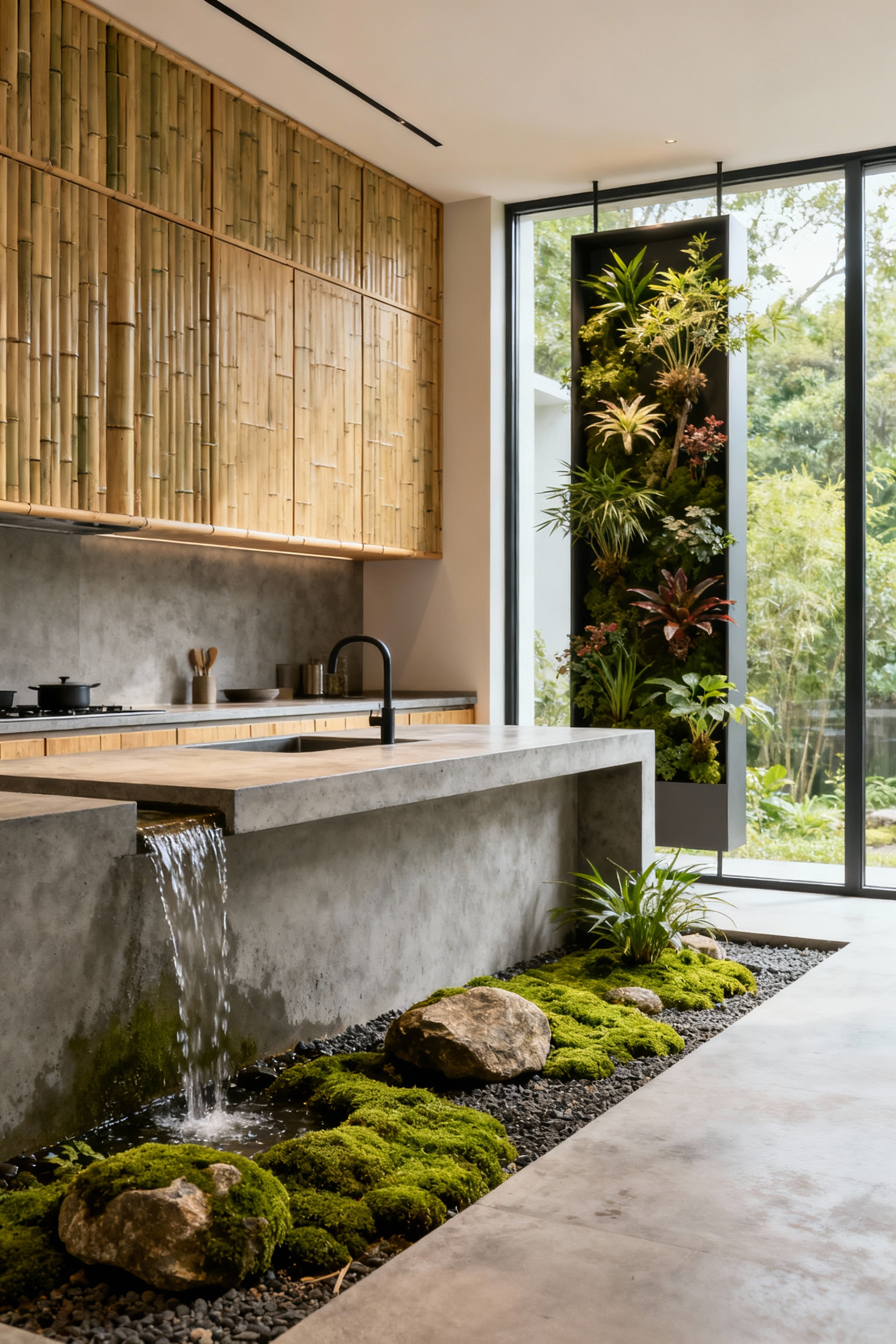
This can be direct, like orienting the space around a large window with a view of a garden or installing a living wall of fresh herbs. But it can also be subtle and just as powerful. Think of the rich, imperfect grain of oak cabinetry, the cool, veined surface of a marble island, or the organic texture of a limewash wall. These elements speak a language our senses understand on a primal level. They ground us. By bringing nature into the heart of the home, the kitchen becomes more than a place to cook; it becomes a sanctuary where we can recharge, find balance, and feel connected to something larger than ourselves.
4. The Wabi-Sabi Ethos in Contemporary Context: Embracing Imperfection for Authentic Character
The precision of European modernism is stunning, but without a counterpoint, it can feel cold. This is where the ancient philosophy of Wabi-Sabi offers such a beautiful balance. It’s the art of finding beauty in imperfection, appreciating the natural cycle of growth and decay. In a world obsessed with flawless, digitally rendered perfection, embracing Wabi-Sabi in modern kitchen interiors is a quiet act of rebellion. It infuses a space with soul and authenticity.
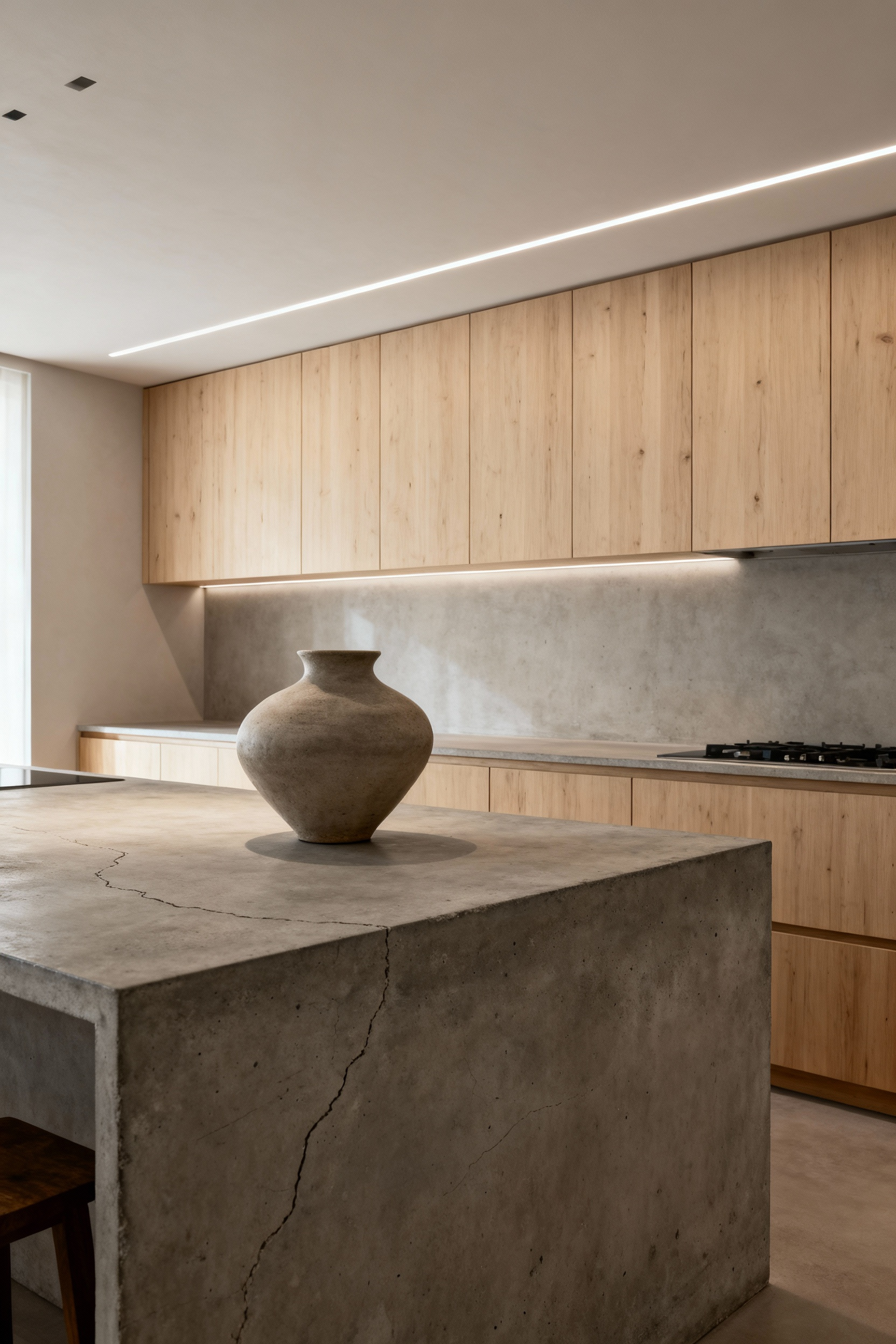
Instead of hiding the passage of time, we celebrate it. This could mean a countertop made of unlacquered brass that will develop a rich patina over the years, or handmade ceramic tiles where no two are exactly alike. It’s choosing materials that tell a story—reclaimed wood with its history of knots and nicks, or a hand-troweled plaster finish that reveals the touch of the artisan. These elements remind us that a home is meant to be lived in, not just looked at. What really gets me is how this approach redefines luxury. It’s no longer about shiny and new; it’s about depth, character, and a sense of peaceful acceptance. It makes a space feel honest.
The Evolving Epistemology of Culinary Spaces: Form, Function, and the Human Element (Part 2)
As our exploration continues, we look at how the modern kitchen must intelligently respond to our changing lives. It’s no longer a static room but a dynamic stage. Here, we see how smart design creates spaces that are not just beautiful, but deeply livable.
5. Multifunctional Design Principles: Orchestrating Versatility for Evolving Lifestyles
The modern kitchen has broken free of its four walls. It’s now the office, the classroom, the café, and the social hub of the home. Designing for this reality requires a fluid, multifunctional approach where every surface and structure holds the potential for more than one purpose. This isn’t just about clever storage; it’s about creating a space that can transform itself to meet the rhythm of the day.
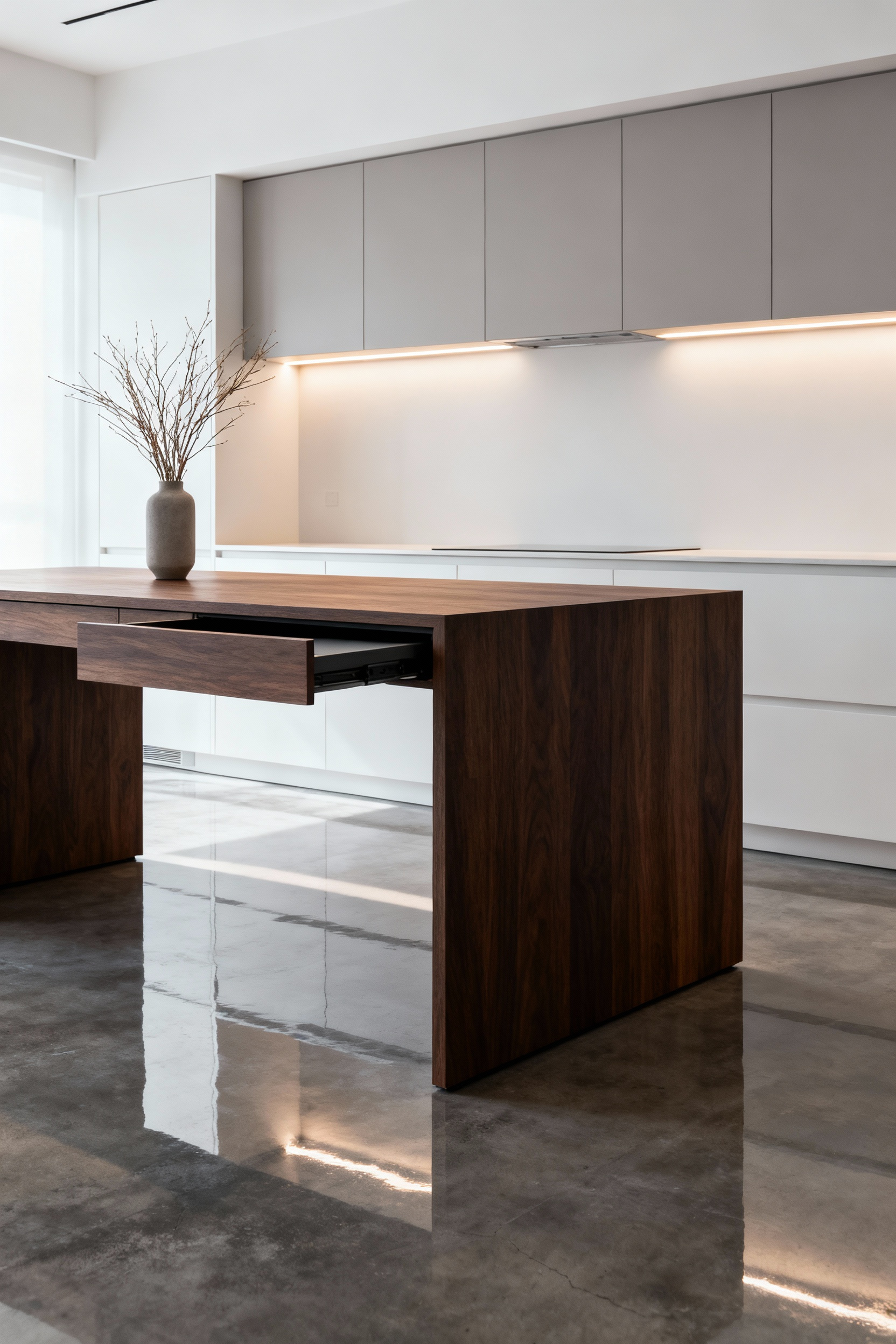
This is where the pragmatic efficiency of European design meets the communal spirit of the Asian family home. Think of a kitchen island that can discreetly extend to become a large dining table, or pocket doors that conceal a dedicated coffee station or workspace, allowing the kitchen to return to a state of calm serenity when the work is done. It’s about creating intelligent zones without building walls, using shifts in lighting, materials, or custom furniture to define different uses within a single open space. A banquette with hidden storage becomes a breakfast nook, a reading corner, and extra seating for a party. These kitchens don’t just perform tasks; they foster richer, more connected lives by adapting gracefully to our ever-changing needs.
The Alchemy of Surfaces: Curating Palettes, Textures, and Integrated Materials (Part 1)
The soul of a kitchen is often found in its surfaces—what we see, touch, and interact with every day. This isn’t just about choosing finishes; it’s about composing a sensory experience. Here, we explore how the thoughtful interplay of material, color, and light creates an environment that feels both cohesive and alive.
6. Monochromatic Sophistication: Mastering Tonal Depths for Understated Visual Calm
A monochromatic palette is not about a lack of color; it’s about a deep exploration of a single hue. When done with intention, it creates a profound sense of calm and sophistication in modern kitchen interiors. The secret is to think in terms of texture and light, not just shade. Imagine a kitchen composed of varying tones of warm grey: honed stone floors, matte lacquer cabinets, a polished island with subtle veining, and brushed metal hardware. Each element speaks the same color language but in a different dialect.
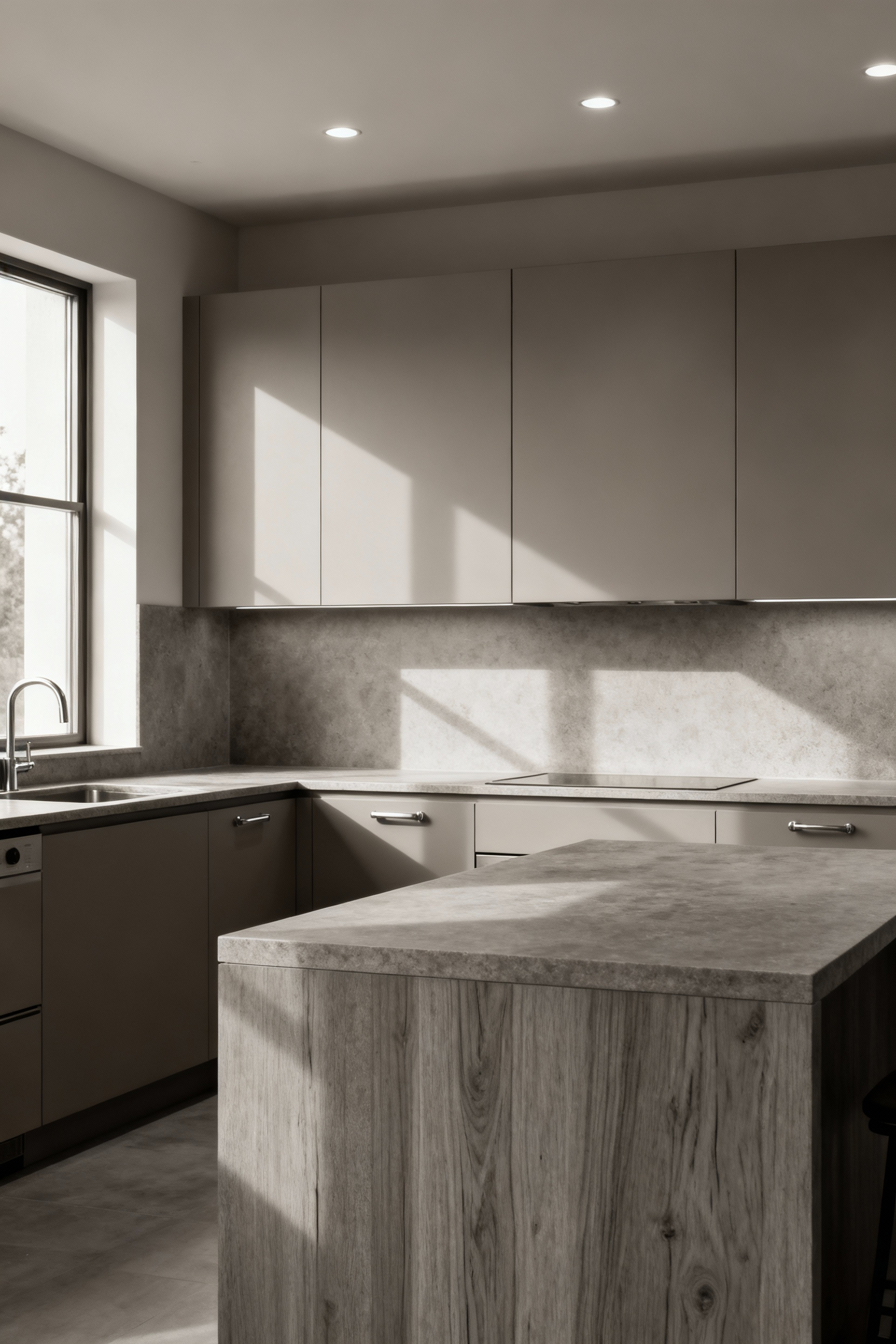
The richness comes from this subtle dialogue between surfaces. A high-gloss finish will reflect light and feel sleek, while a matte or wire-brushed texture will absorb light and feel soft and grounding. The play of light and shadow becomes a primary design element, carving out shapes and adding depth throughout the day. This isn’t about being boring; it’s about restraint. By simplifying the color story, you amplify the beauty of the materials themselves. It’s a quiet confidence that doesn’t need to shout to be heard.
7. Tactile Layering: Engaging Senses with Strategic Material Juxtaposition
A space truly comes alive when it engages more than just the eyes. Tactile layering is the art of composing with texture, creating a sensory landscape that invites touch and adds deep character. It’s about the sophisticated contrast between different materials—the rough against the smooth, the warm against the cool. This is a technique I use constantly to bridge cultural aesthetics in modern kitchen interiors.
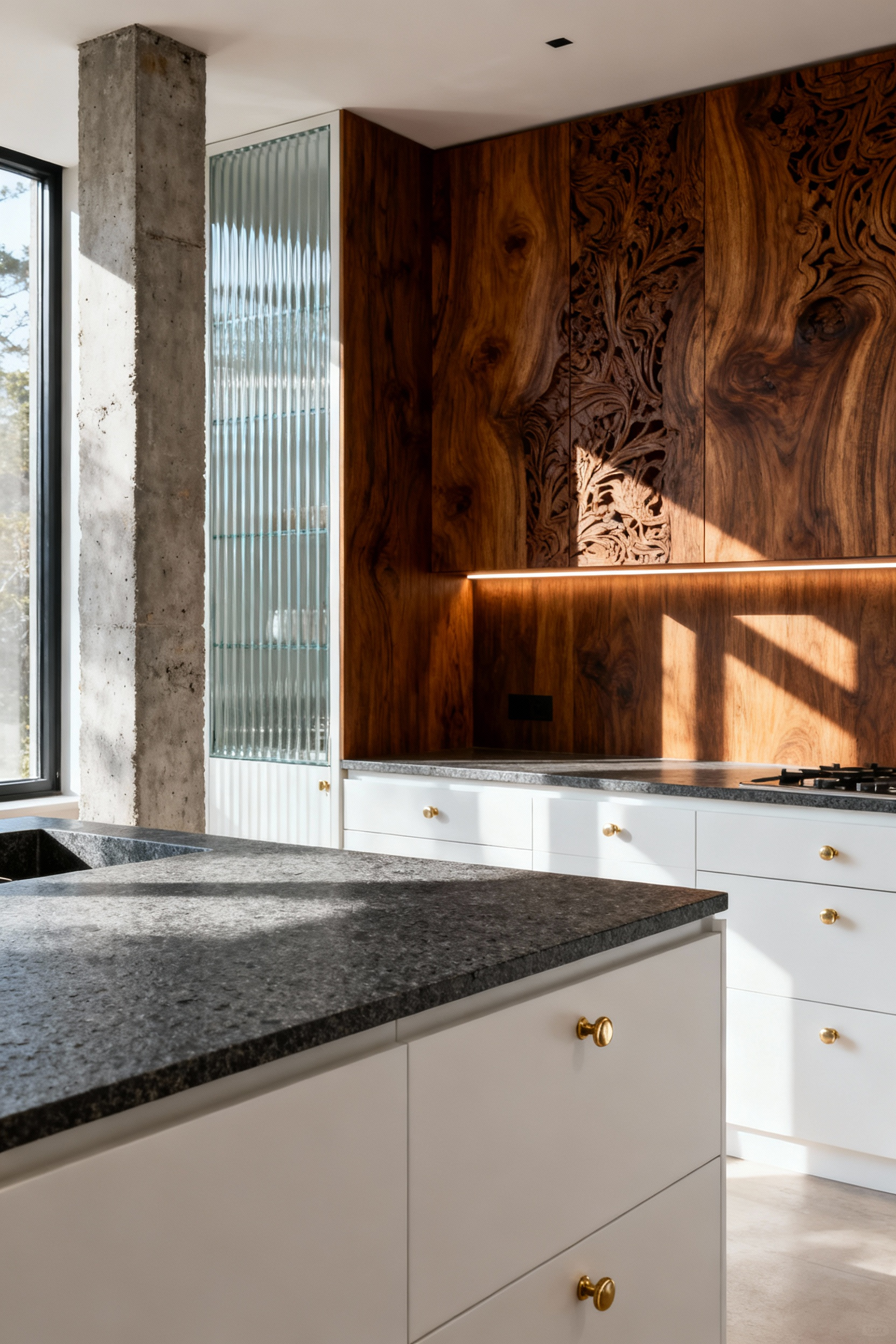
I’ve seen this play out beautifully in projects where we’ve paired sleek, lacquered European cabinetry with panels of hand-woven rattan or the rich grain of dark, reclaimed wood. The juxtaposition is striking. The cool, smooth feel of a quartz worktop is made even more luxurious when placed next to the rustic texture of a split-face stone wall. Even small details, like leather-wrapped cabinet pulls or hammered brass fixtures, contribute to this rich sensory tapestry. By layering textures, you create a dynamic tension that prevents a minimalist design from feeling sterile. You’re building a space that feels complex, warm, and deeply considered.
8. Invisible Integration of Appliances: Achieving Seamless Aesthetic Cohesion with Purposeful Design
One of the defining features of truly high-end modern kitchen interiors is what you don’t see. The invisible integration of appliances is about allowing technology to serve you without visually dominating the space. It’s a commitment to aesthetic cohesion, where the kitchen feels less like a machine for cooking and more like a serene and elegant living area. When functionality recedes into the architecture, the beauty of the materials and forms can take center stage.
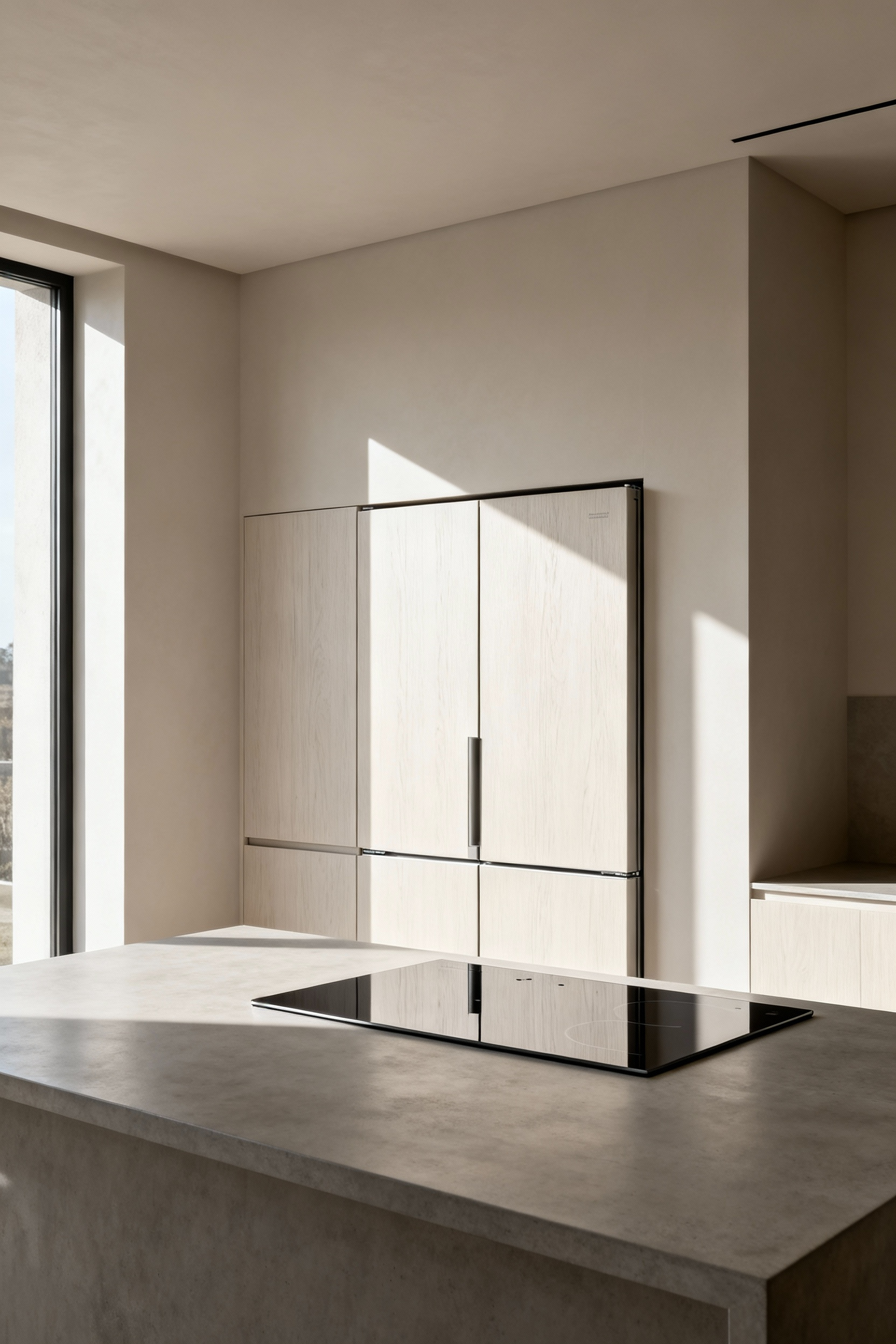
This is achieved with panel-ready appliances that wear the same finish as the surrounding cabinetry, making refrigerators and dishwashers disappear. It’s about downdraft ventilation systems that rise silently from the countertop when needed, preserving clean sightlines across an island. Microwaves hide in drawers or dedicated pantries, and even power outlets can be cleverly concealed. This isn’t about hiding from technology; it’s about mastering it. The result is an uncluttered visual plane that feels calm, intentional, and incredibly sophisticated, allowing the home’s character to shine through.
9. Dynamic Lighting Architectures: Sculpting Mood and Enhancing Task Precision
Light is a material. It’s one of the most powerful tools a designer has to shape a space, and in modern kitchen interiors, it must perform multiple roles. A dynamic lighting architecture is a layered system designed to sculpt mood, define zones, and provide precision for tasks. It moves beyond a single, harsh overhead light to create an environment that is adaptable, beautiful, and deeply functional. It’s the key to making a kitchen feel inviting at any hour.
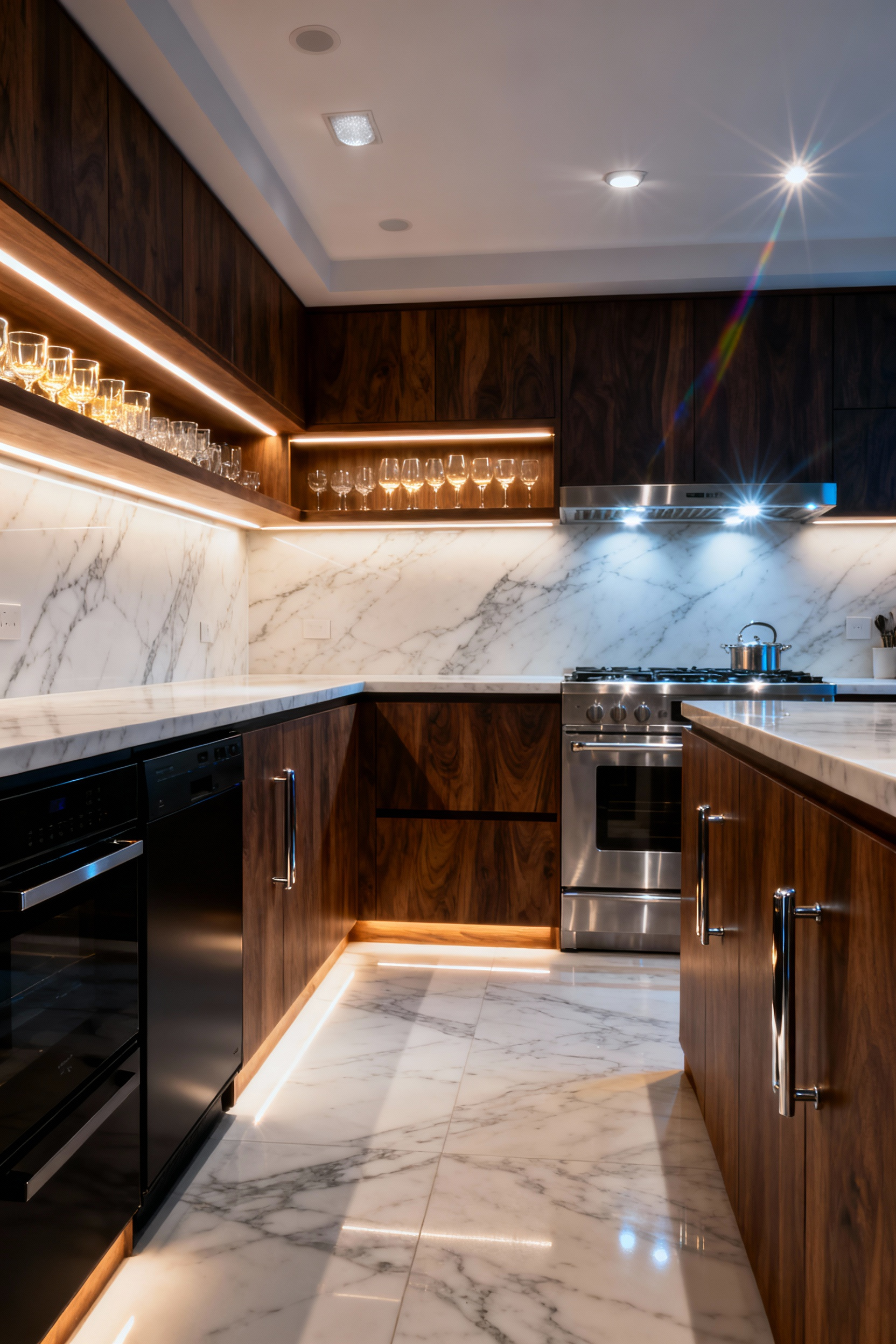
This scheme has three essential layers. First, ambient light—often soft, recessed LEDs—provides the base level of illumination. Second, task lighting is directed exactly where you need it, like focused LED strips under cabinets for prep work or pendants over an island. Finally, accent lighting adds the poetry. It might highlight the texture of a stone backsplash, graze a column of beautiful cabinetry, or create a soft glow from within a glass-fronted cabinet. With smart controls and dimmers, you can shift the atmosphere from bright and energetic for cooking to warm and intimate for entertaining. This thoughtful approach transforms a room into a living, breathing space.
The Alchemy of Surfaces: Curating Palettes, Textures, and Integrated Materials (Part 2)
Moving beyond finishes, we now look at the very structure of the kitchen’s components. Bespoke design is where true artistry and personal expression come to life, elevating functional elements into pieces of fine, integrated furniture.
10. Bespoke Cabinetry Artistry: Elevating Storage Beyond Utility through Custom Craftsmanship
Bespoke cabinetry is the ultimate expression of purpose-built design. It’s not about just filling a space; it’s about shaping that space to your exact needs and aesthetic vision. It is where craftsmanship elevates storage from mere utility into a form of architectural art, a core principle in creating distinguished modern kitchen interiors. A bespoke approach allows you to optimize every millimeter, integrating storage so seamlessly that it becomes part of the room’s pure, clean geometry.
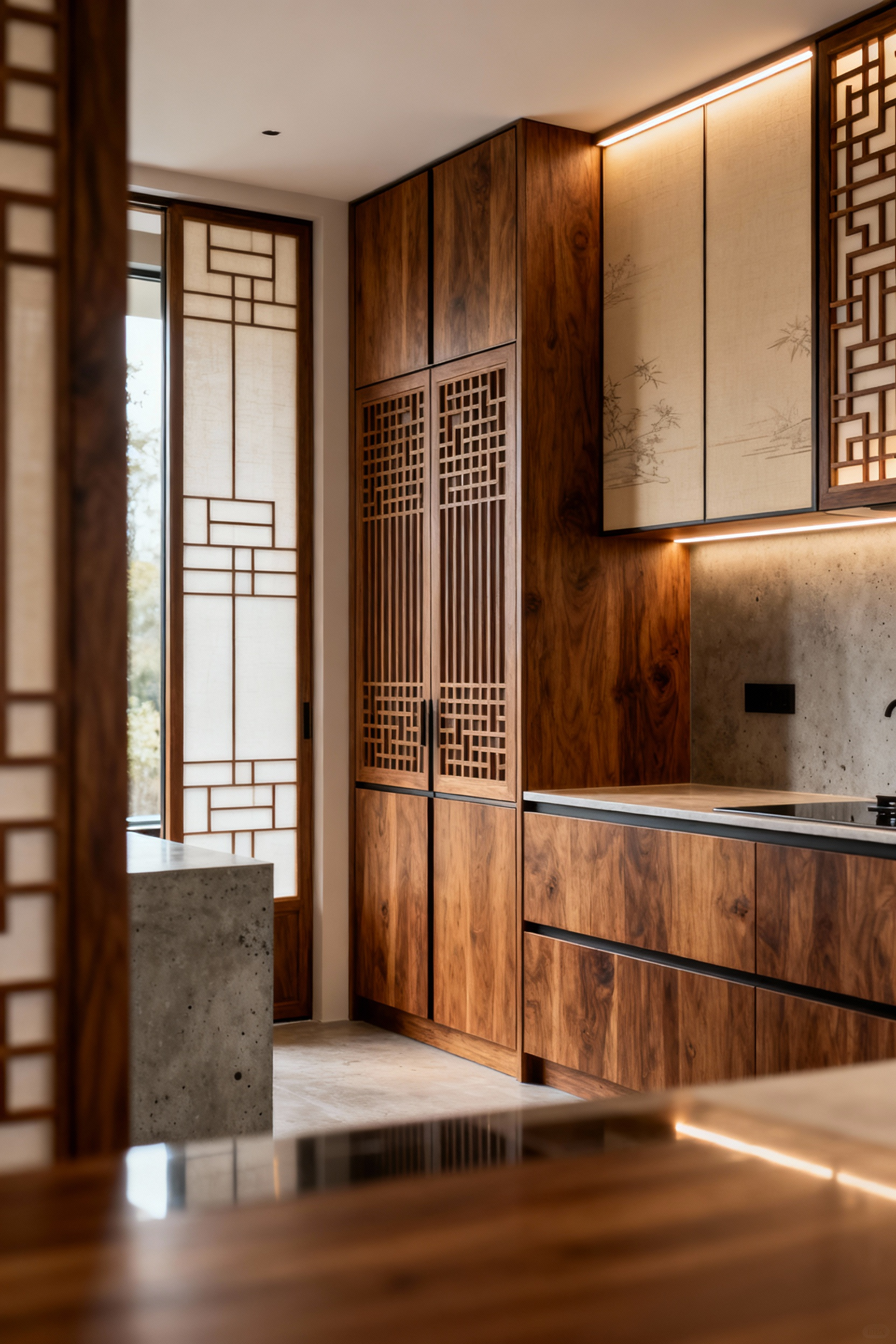
The real artistry lies in the choice of materials and details. This is where you can tell a personal story. Imagine cabinet fronts finished in traditional Vietnamese lacquer, their deep, polished sheen contrasting with minimalist European forms. Or fluted glass panels that offer a subtle, elegant nod to Art Deco, set within sleek, modern frames. Grain-matched wood veneers that wrap continuously around an island create a monolithic, sculptural effect that’s simply impossible with standard components. This level of detail extends inside, too, with custom-designed organizers for everything from spices to smart devices. It is an investment in quality that you can see and feel every day, creating a sense of permanence and profound harmony.
Orchestrating Intelligence: Advanced Ergonomics and Smart Ecosystem Integration (Part 1)
The most sophisticated modern kitchens aren’t just smart; they’re intelligent. They use technology not as a gimmick, but as a way to create a more efficient, comfortable, and intuitive experience. This section explores how a thoughtful integration of innovation can elevate the act of cooking into a seamless art form.
11. Precision Induction Hobs with Integrated Ventilation: A Synergy of Form and Culinary Performance
The induction hob with integrated ventilation is a perfect marriage of high performance and minimalist aesthetics. It represents a fundamental shift in kitchen design. Induction cooking itself offers incredible speed, safety, and precise temperature control. But when paired with a downdraft vent that silently draws steam and odors away at the source, it becomes a true design game-changer for modern kitchen interiors.
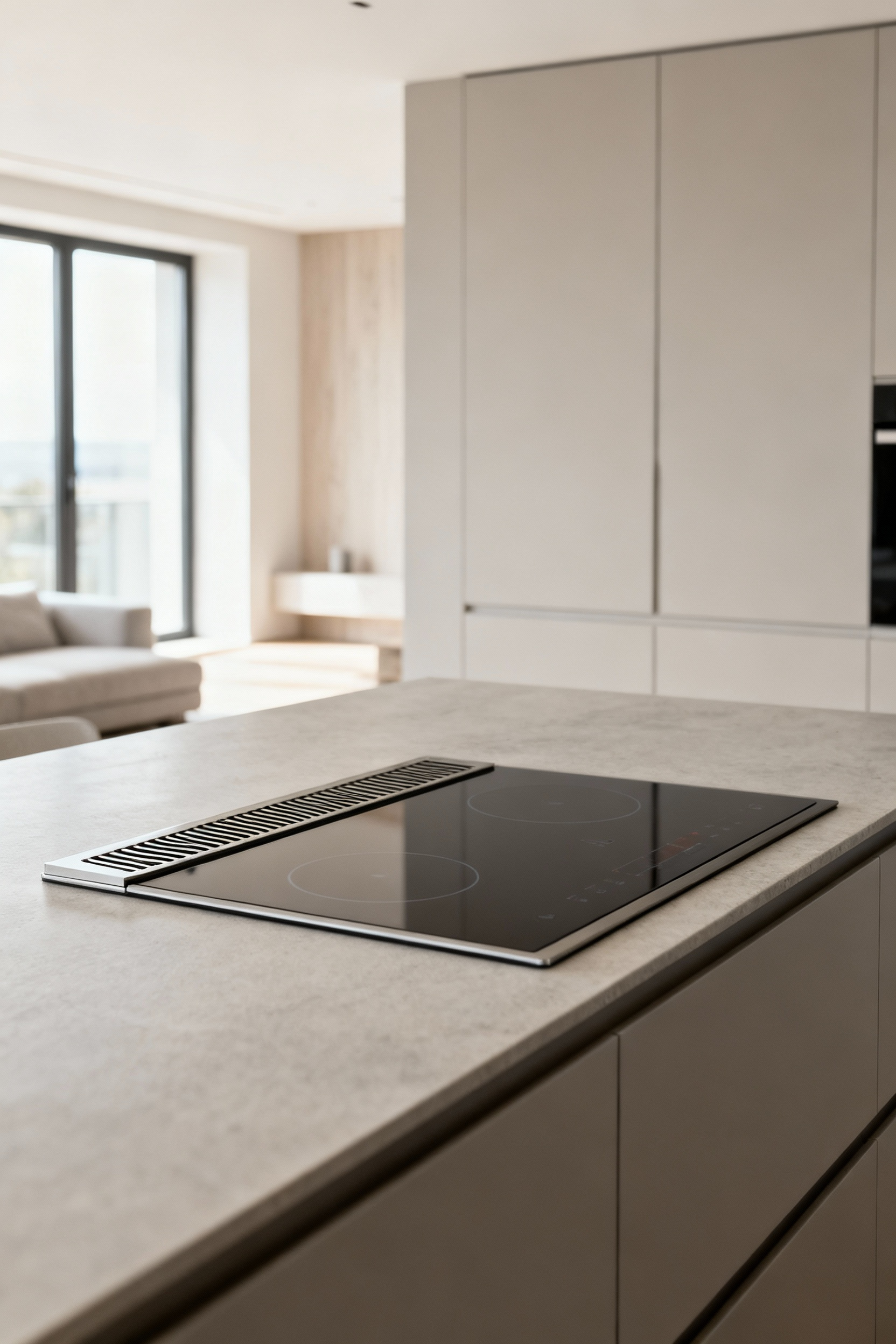
This synergy allows for complete freedom in kitchen layout. You can place your cooktop on an island without needing a massive, view-obstructing hood overhead, maintaining the open, social feel of a contemporary space. The look is impossibly sleek—a single, dark plane of glass that is both a powerful cooking tool and an elegant, easy-to-clean surface. This is technology in service of design, creating a powerful focal point that is both highly functional and beautifully understated.
12. Smart Appliance Orchestration: Unifying Controls for a Streamlined and Responsive Culinary Journey
True intelligence in the modern kitchen comes from orchestration—when individual smart appliances begin to work together as a unified ecosystem. This is not about technology for its own sake. It is about streamlining your life and removing points of friction from your daily routines, creating a kitchen that anticipates your needs.
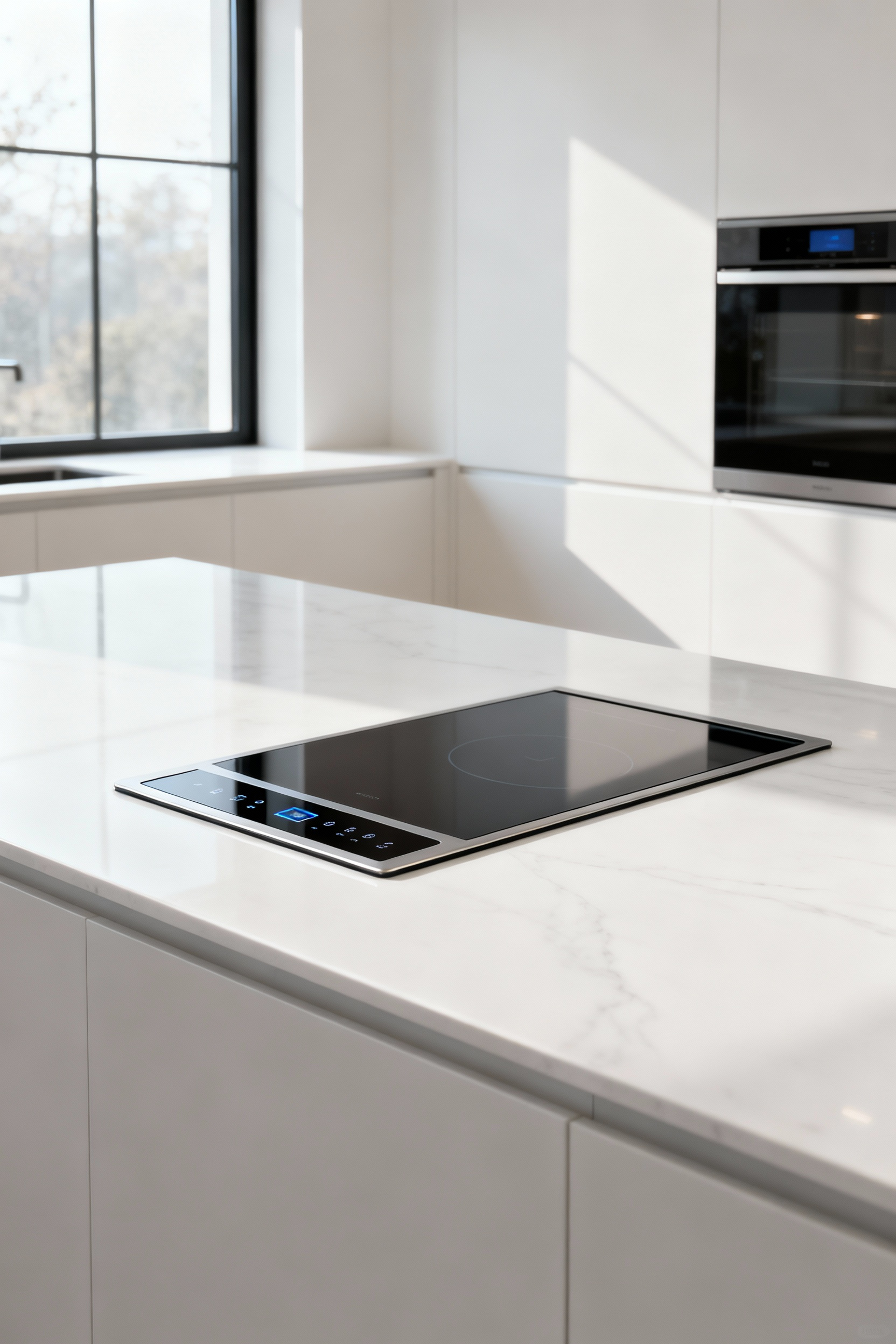
Imagine preheating your oven on your way home from work through an app, or your refrigerator suggesting a recipe based on the ingredients you have on hand and adding what you’re missing to a shopping list. A smart dishwasher can be set to run automatically during off-peak energy hours, while your coffee machine prepares your morning brew as your alarm goes off. These connected systems learn your habits, offering a level of personalization that feels like a quiet, invisible assistant. The goal is to make life easier and more efficient, freeing up your time and mental energy for more important things.
13. Voice-Activated Interface Integration: Cultivating Hands-Free Operational Elegance and Accessibility
The integration of voice control into the kitchen is one of the most practical and elegant advancements in modern design. It creates a truly hands-free environment, which is a revelation when you are in the middle of cooking with messy hands. It fosters an ease of operation that feels utterly natural and fluid.
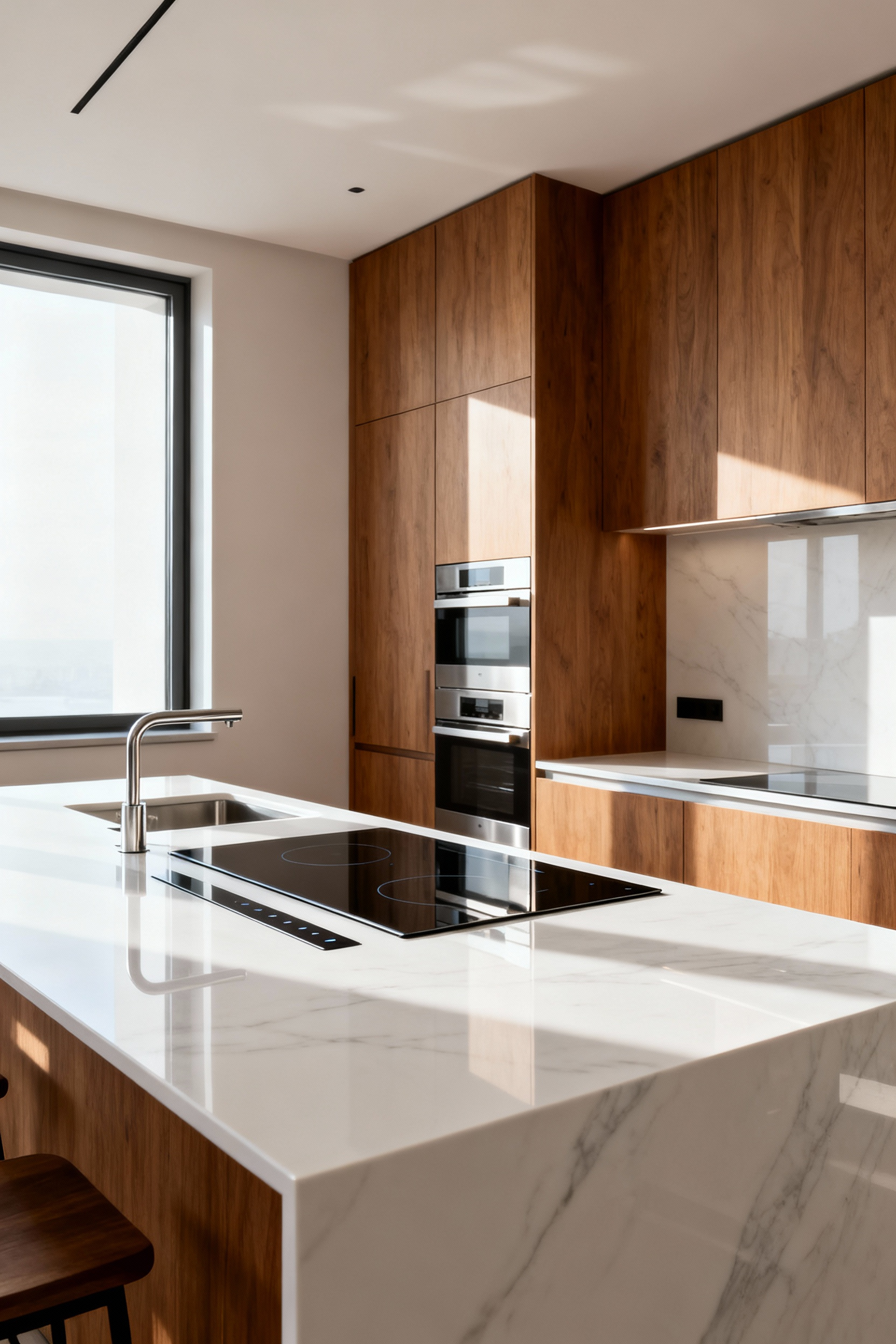
Simply asking your kitchen to set multiple timers, convert measurements, or preheat the oven without touching a screen or button preserves your creative flow. You can add an item to your grocery list the moment you think of it, or adjust the lighting and music to shift the room’s atmosphere. From a design perspective, it helps achieve a minimalist aesthetic by reducing the need for visible controls and screens. Voice activation is the ultimate form of integrated technology—powerful when you need it, and completely invisible when you don’t.
14. Adaptive Storage Solutions: Optimizing Space with Dynamic Racking and Compartmentalization for Enhanced Organization
Elegance and order go hand in hand. The most serene modern kitchen interiors are built on a foundation of brilliant organization. Adaptive storage is the science behind this calm, where the interior architecture of the cabinetry is as thoughtfully designed as its exterior. It’s about creating an intuitive system where everything has a designated place and is easily accessible.
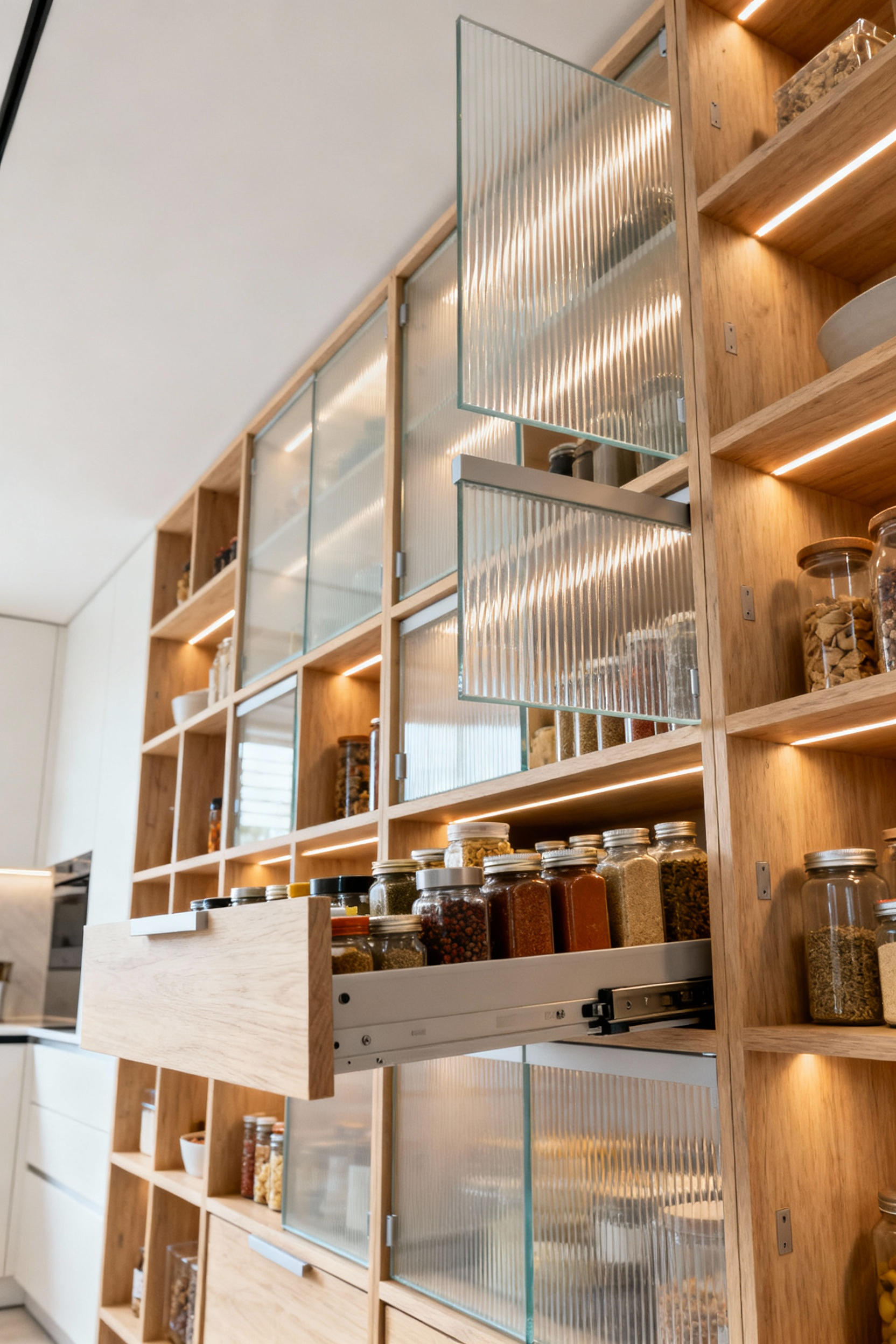
This goes far beyond simple shelves. We’re talking about deep drawers with customizable peg systems for dishes, narrow pull-out pantries that make use of otherwise wasted space, and ingenious corner solutions that bring every item into easy reach. Integrated dividers, tiered spice racks, and in-drawer knife blocks turn chaotic jumbles into models of efficiency. This meticulous compartmentalization isn’t just practical; it’s a form of self-care. Knowing exactly where everything is reduces daily stress and allows the visual purity of the kitchen to remain undisturbed, creating a foundation for a clear and focused mind.
Orchestrating Intelligence: Advanced Ergonomics and Smart Ecosystem Integration (Part 2)
Our exploration of an intelligent kitchen continues, moving towards systems that support not just our tasks, but our well-being. This is where design transcends convenience and becomes a proactive partner in a healthier, more refined lifestyle.
15. Integrated Water Filtration and Dispensation Systems: Elevating Health and Convenience Through Smart Design
In today’s world, a focus on health and wellness is the ultimate luxury. An integrated water system is a quiet but powerful statement of this priority in modern kitchen interiors. It moves beyond a simple tap to become a comprehensive hydration station, seamlessly providing purified, chilled, boiling, and even sparkling water on demand. This is about elevating a fundamental daily need into an effortless, elegant ritual.
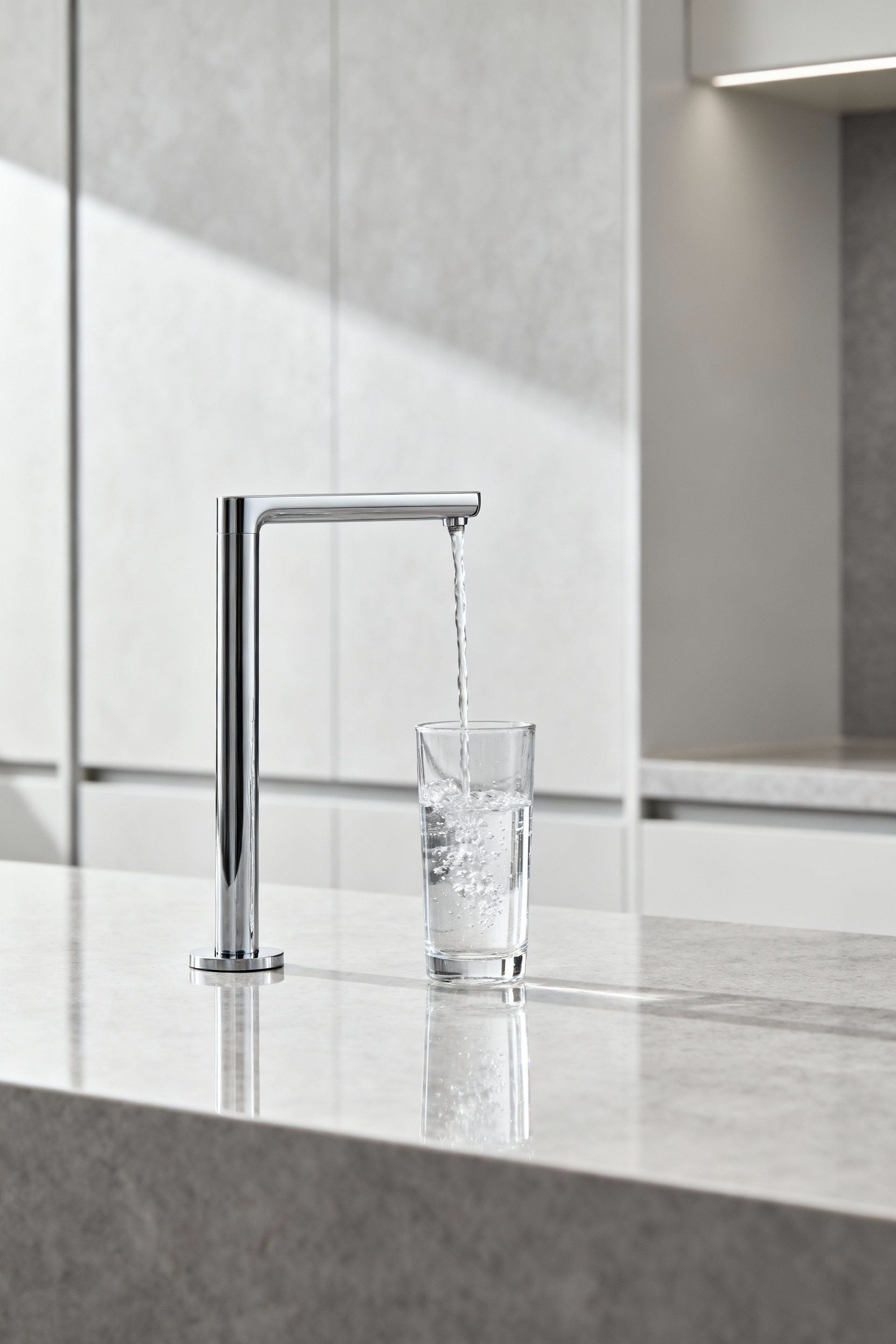
What I tell my clients is that design should support our best intentions. A system like this makes healthy choices easier and more appealing, while drastically reducing the reliance on single-use plastic bottles—a key aspect of responsible, mindful living. Brands like Zip and Grohe have mastered this, consolidating multiple functions into a single, beautifully designed faucet that eliminates countertop clutter like kettles and water filters. The technology is hidden discreetly under the sink, preserving the kitchen’s clean aesthetic. It is a perfect example of design that nurtures both personal well-being and a broader consciousness.
The Nexus of Wellness and Culinary Expression: Crafting a Sanctuary of Nourishment (Part 1)
A kitchen should do more than feed the body; it should nourish the soul. This section explores how to create a true sanctuary by weaving in elements of nature, personal expression, and sensory comfort. These are the details that transform a room into a place of restoration and joy.
16. Integrated Herb and Microgreen Gardens: A Biophilic Approach to Proximate Freshness
There is nothing that connects you more directly to your food than growing some of it yourself. An integrated herb garden is one of my favorite elements to include in modern kitchen interiors. It is a living, breathing expression of the Vietnamese culinary philosophy, where fresh herbs are not a garnish, but a central component of a meal. It’s biophilia in its most delicious and practical form.
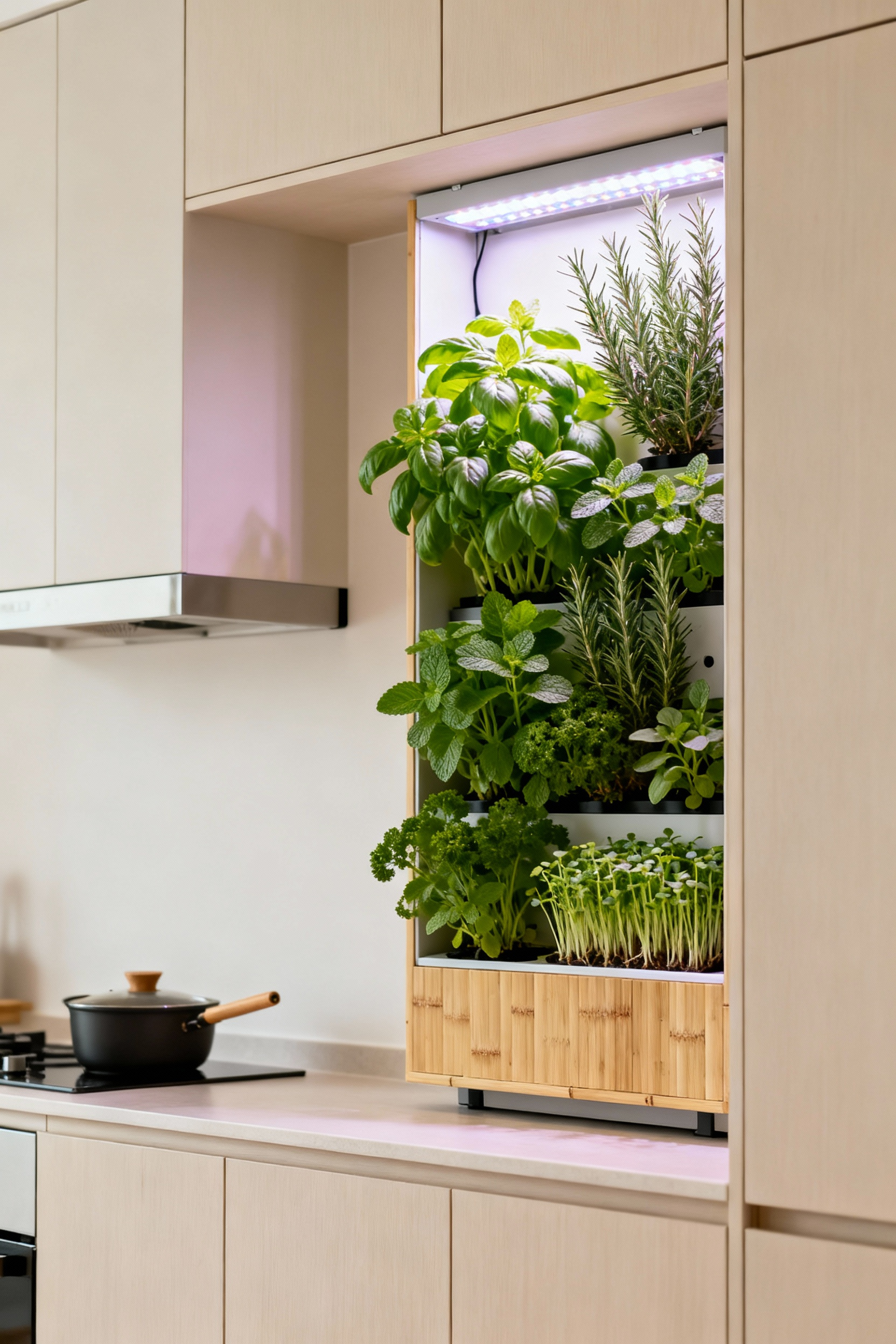
These systems can range from a few simple pots on a sunlit sill to sophisticated, self-watering vertical gardens built right into the cabinetry. The ability to snip fresh basil, mint, or cilantro moments before using them is a small luxury that elevates every dish. Beyond flavor, the presence of living greenery has a proven calming effect, infusing the kitchen with vitality and a beautiful, organic texture. It’s a constant, gentle reminder of our connection to nature and the source of our nourishment.
17. Curated Artistry and Object Placement: Infusing Personal Narrative and Visual Intrigue with Intention
A kitchen without personal touches is just a showroom. To make it a home, you must infuse it with your own story. The careful curation and placement of art and meaningful objects transforms sterile surfaces into vignettes of your life. This isn’t about filling every space; it is about intentional, soulful editing.
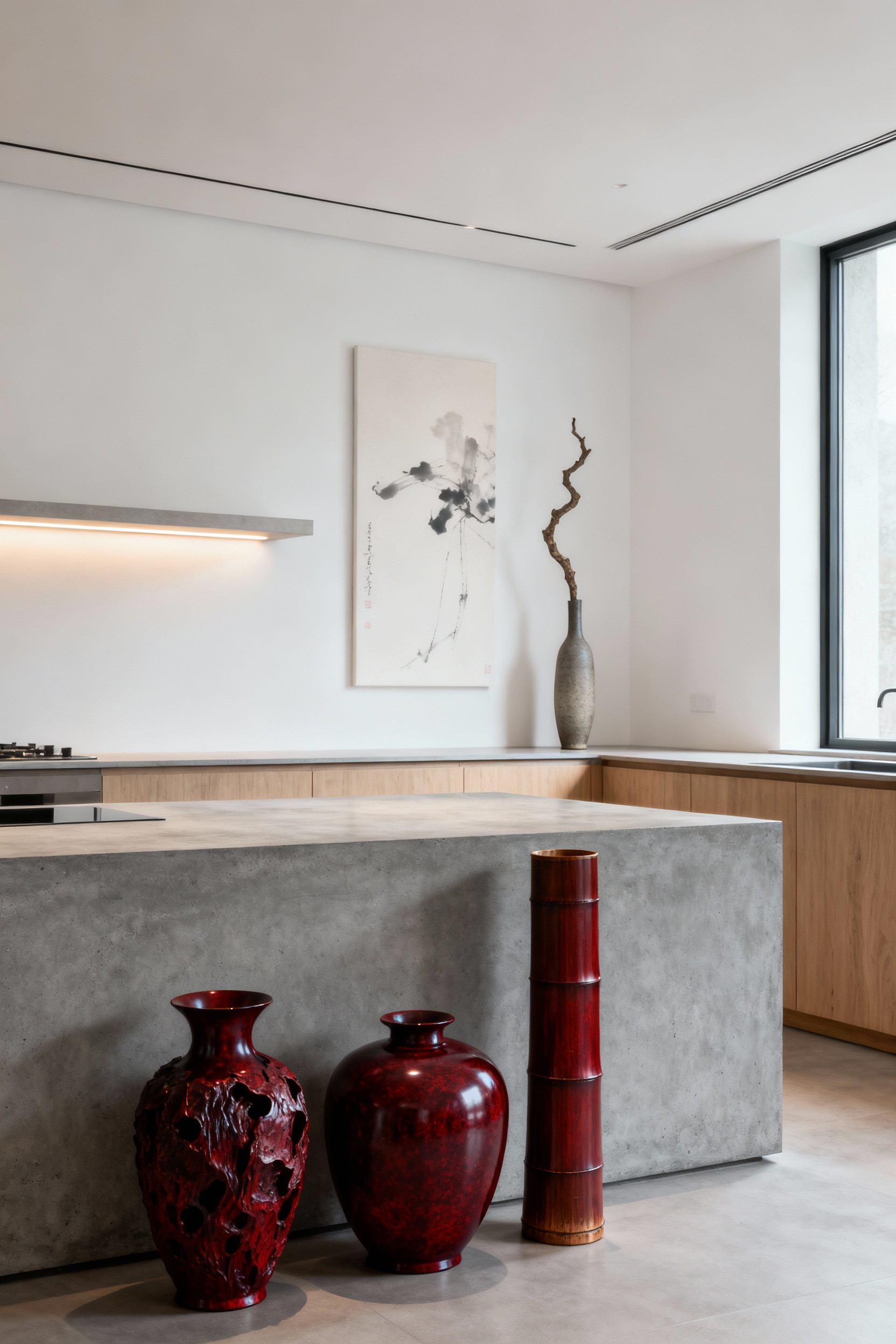
A single, beautiful sculpture on the end of an island, a collection of hand-thrown ceramics on an open shelf, or even a stunningly crafted knife block can act as an artistic focal point. In my professional experience, the most compelling spaces blend cultures with confidence—placing a modern European abstract painting near an antique Asian vessel, for instance. Each piece tells a story and sparks a dialogue. You are creating moments for your eye to rest and your mind to wander. This is how you give a modern, minimal space its warmth and character.
18. Strategic Sound Dampening: Achieving Acoustic Harmony within Open-Plan Architectural Spaces
One of the most overlooked aspects of luxury is silence. In open-plan homes, the kitchen can be a source of significant noise—the clang of pans, the whir of appliances, the echo of voices. Strategic sound dampening is a crucial, if invisible, element in creating a truly serene sanctuary in modern kitchen interiors. It addresses our deep need for tranquility and allows for easy conversation and a peaceful atmosphere.
This can be achieved through both soft and hard surfaces. Using materials with acoustic properties, like wood-fiber ceiling panels, natural cork flooring, or fabric-upholstered bar stools, helps absorb sound. Even a large bookshelf filled with books adjacent to the kitchen can act as a natural sound diffuser. Choosing appliances with low decibel ratings is another key consideration. By layering in these sound-absorbing elements, you create an environment that feels calm and controlled, a space where you can think clearly and connect with others without the stress of constant background noise.
19. Circular Economy Principles: Designing for Longevity, Adaptability, and Resource Consciousness
Truly modern design is conscious design. Embracing the principles of a circular economy means choosing longevity over disposability and adaptability over rigid trends. It’s a philosophy that aligns deeply with the traditional values of resourcefulness and durability, reimagined for our contemporary context. It’s about creating modern kitchen interiors that are not only beautiful today, but are designed to last and adapt for decades to come.
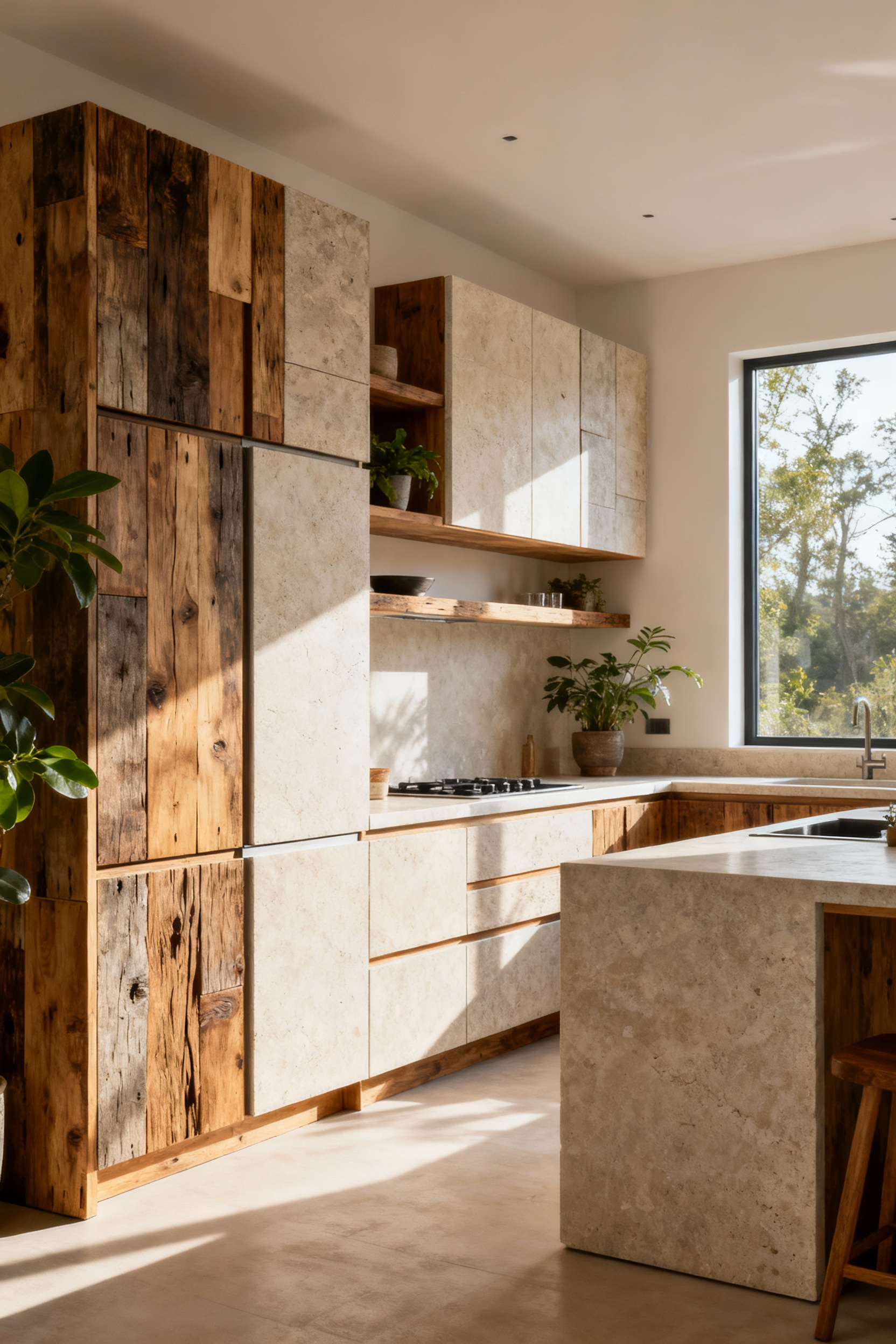
This starts with selecting high-quality, durable, and wherever possible, renewable or recycled materials—solid wood from sustainable forests, countertops made from recycled glass, or fixtures built to be repaired, not replaced. It also means designing for modularity, using mechanical fasteners instead of permanent glues, so that a cabinet front or a single component can be updated or repaired without needing to tear out the entire kitchen. It is a commitment to creating less waste and to building things of lasting value—a quiet, powerful statement about what truly matters.
The Nexus of Wellness and Culinary Expression: Crafting a Sanctuary of Nourishment (Part 2)
In this final section, we explore the most personal aspect of kitchen design: creating a space that honors and elevates our daily rituals. It is here that the kitchen completes its transformation from a place of work into a haven for mindful engagement.
20. Personalizing the Culinary Ritual: Cultivating Bespoke Experience Zones for Reflective Engagement
Beyond cooking, a kitchen is a place for rituals. The first cup of coffee in the morning, the preparation of tea in the afternoon—these are small moments of reflection that deserve a dedicated space. Personalizing these rituals means designing bespoke “experience zones” within modern kitchen interiors that elevate these simple acts into mindful practices.
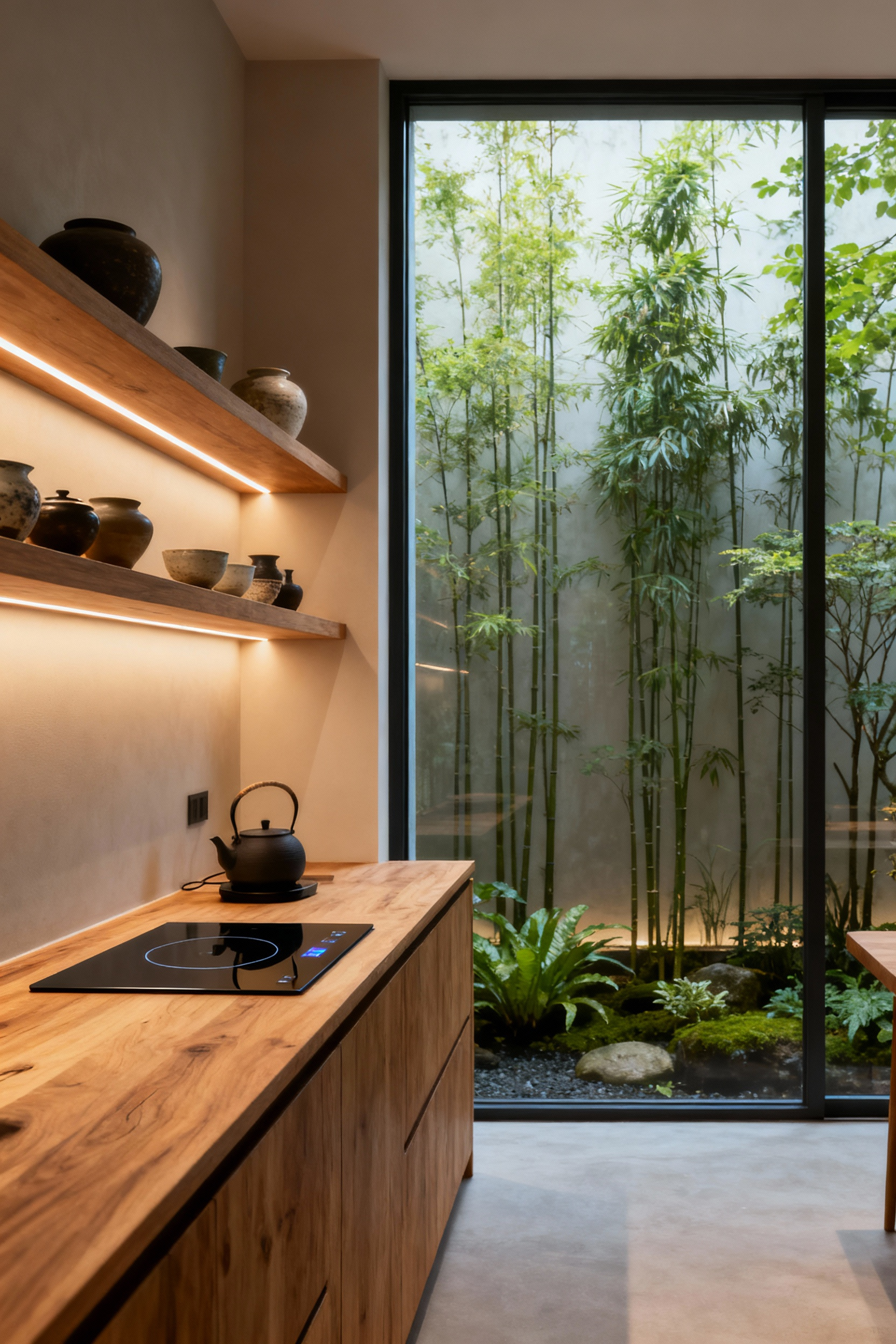
This could be a beautifully organized coffee and tea station, with dedicated storage for your favorite cups, a built-in filtered water source, and specific lighting that creates a calm morning mood. Or perhaps it’s a small, comfortable nook—a window seat or a small banquette—for planning meals or simply pausing with a cookbook. These zones are about creating intentional space for the quiet moments in between the busy ones. By honoring these personal rituals with thoughtful design, the kitchen becomes more than just the heart of the home; it becomes a space that actively supports your well-being and enriches your daily life.
Conclusion
As we’ve journeyed through these twenty elements, a central truth emerges: a truly beautiful kitchen is a harmonious one. It’s a space where every choice, from the overall flow to the texture of a single handle, works in concert to tell a cohesive story. Great design isn’t a checklist of features; it’s the artful synthesis of function, aesthetics, and personal philosophy, culminating in an environment that simply feels right.
Timeless grace is found in this balance. It’s in the fusion of clean, modern lines with warm, natural materials; the integration of quiet technology that serves but doesn’t intrude; and the creation of a space that is both an efficient workshop and a peaceful sanctuary. Your kitchen should be a reflection of the life you want to live—one of intention, beauty, and connection.
As you begin to shape your own space, let these principles be your guide. Trust your intuition, and dare to create a kitchen that is not just a backdrop for your life, but an active participant in it. Forge an environment that resonates deeply with who you are, a space where daily rituals are elevated and a sense of calm elegance is your constant companion.
